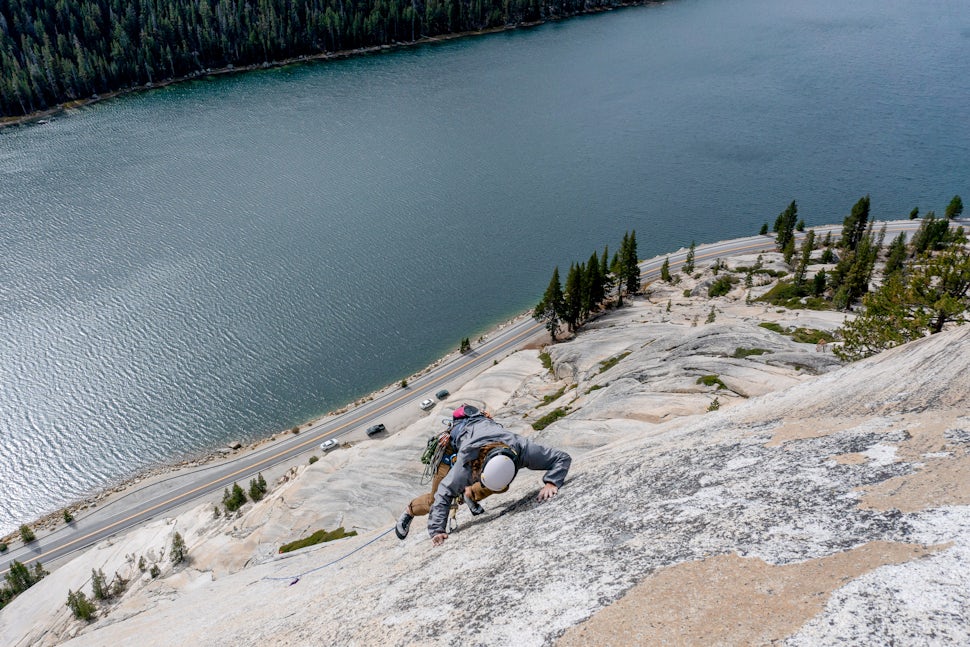Outbound Reviewed: Mammut Made the World's First Climbing Helmet with MIPS Technology
Testing Mammut's Wall Rider MIPS Climbing Helmet

As a guy who played football and rugby for over a decade (and suffered my fair share of concussions), I am especially appreciative of Mammut's efforts to advance helmet technology for the climbing community with their new Wall Rider Climbing Helmet. MIPS stands for Multi-Directional Impact Protection System and the system is meant to reduce the amount of rotational acceleration your brain experiences during impact on your head.
The basic idea is that the interior of the helmet is lined with the MIPS technology, AKA a thin plastic layer (usually yellow in color, as seen below), that allows the helmet to rotate independently, therefore absorbing and distributing much of the rotational acceleration energy through the helmet itself rather than through the wearer's skull and brain. These two articles (here and here) provide excellent background information on the biomechanics of concussions and rotational acceleration as it pertains to brain injuries from impact.
This technology is especially useful for climbers since impacts, whether from falls or falling rocks, are very unlikely to be perpendicular, resulting in linear acceleration. Falling rocks or other items will often bounce off the wall coming at all sorts of angles and a fall usually means a climber is swinging and often times out of control, again resulting in variable angles at the point of impact.
While I can't say I've put the MIPS feature itself to the test (and I hope I never do), I can say that from the research I've done, the technology seems to be sound and I'm stoked to see Mammut leading the industry into a safer era for climbers.
As for the other features on the Wall Rider, I'm a huge fan. I found it considerably more comfortable than my pervious go-to (the Black Diamond Half Dome). To be fair, the Half Dome is less than half the cost and has always served me well (including several falls/impacts) and I still recommend it, but the Wall Rider was generally much more comfortable to wear for longer periods of time.
The large ventilation openings throughout the side and back of the helmet allowed for easy air circulation, keeping me nice and cool climbing under the warm sun. I also loved the lightweight and thin webbing used on the straps. It's a small difference between most climbing or bike helmets I've worn, but it was noticeable and really pleasant (check out this review of the Bontrager Quantum MIPS BOA Bike Helmet). The system for tightening and loosening the straps was slightly tricky to get used to for me, as most climbing helmets I'd used in the past had wheel systems (like BOA), but once I got the hang of it, it's pretty easy to find the perfect fit. Last, the headlamp clips will certainly come in handy for the inevitable epics I'll somehow continue to get myself into.

Check out more of our favorite climbing gear:
Photos courtesy of Mammut and Kristi Teplitz
We want to acknowledge and thank the past, present, and future generations of all Native Nations and Indigenous Peoples whose ancestral lands we travel, explore, and play on. Always practice Leave No Trace ethics on your adventures and follow local regulations. Please explore responsibly!
Do you love the outdoors?
Yep, us too. That's why we send you the best local adventures, stories, and expert advice, right to your inbox.













